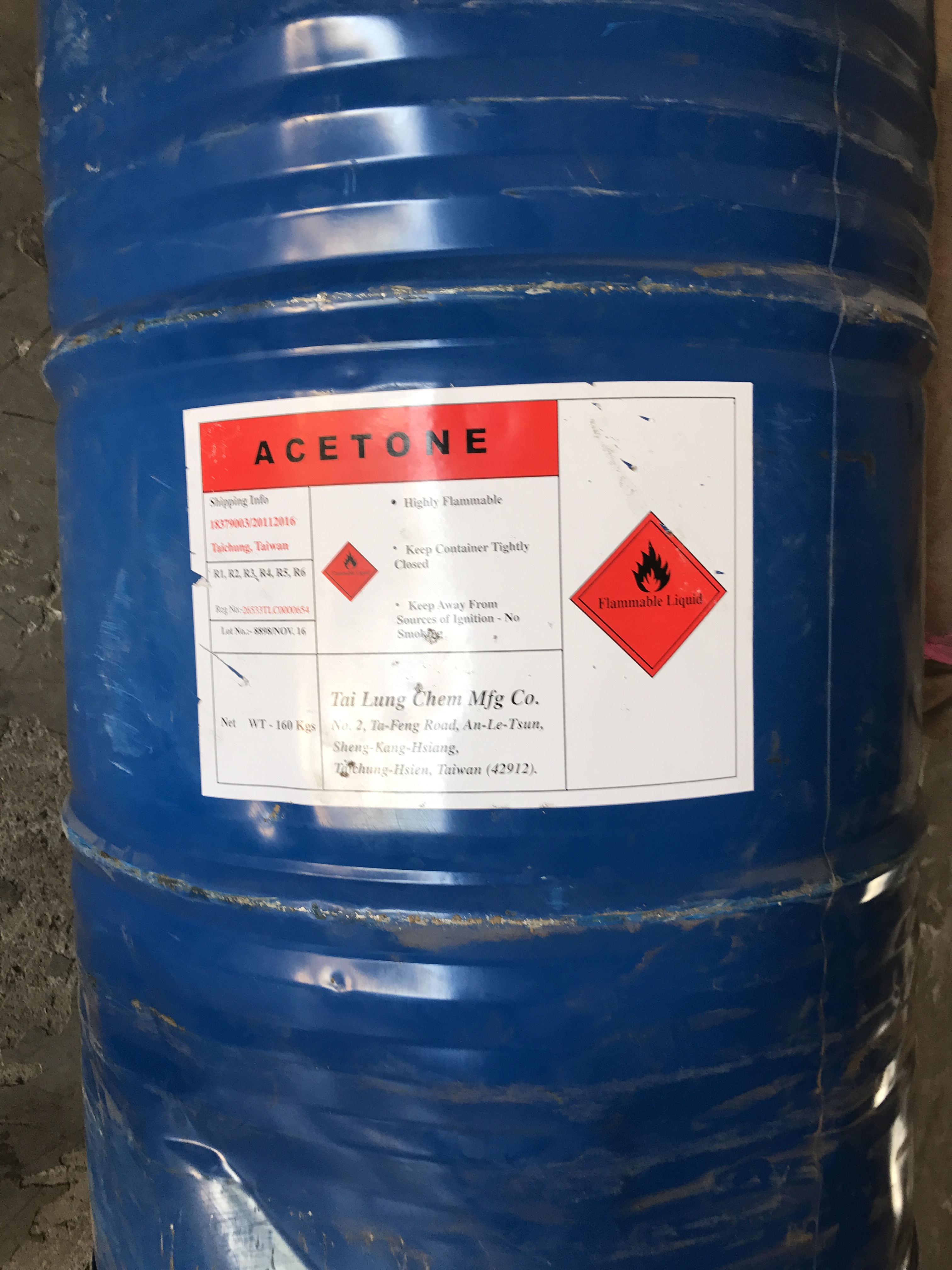Acetone (systematically named propanone) is the organic compound with the formula (CH)CO . It is a colorless, volatile, flammable liquid, and is the simplest ketone. We procure Acetone from Reliable Import Origin & Manufacturers And provide you in Different packing as per your requirement.Certificate of analysis (Coa) and material safety data sheet(msds) is attached.
Formula: C3H6O
Boiling point: 56 °C
Density: 791.00 kg/m³
Molar mass: 58.08 g/mol
Melting point: -95 °C
Classification: Ketone
Physical Description:
- Acetone appears as a clear colorless liquid with a sweetish odor. Flash point 0°F. Less dense than water. Vapors are heavier than air. Used as a solvent in paint and nail polish removers.
- Colorless liquid with a fragrant, mint-like odor.
- Color/Form – Colorless volatile liquid
- Odor – Fruity odor
- Taste – Pungent, sweetish
Use Classification –
- Chemical Classes – Volatile organic compounds
- Food additives – Flavoring Agents
- Fire Hazards – Flammable – 3rd degree
- Cosmetics – Denaturant; Solvent
- Flavoring Agents – JECFA Flavorings Index
- Fatty Acyls [FA] – Oxygenated hydrocarbons
Uses:
- For acetone (USEPA/OPP Pesticide Code: 044101) there are 0 labels match. /SRP: Not registered for current use in the U.S., but approved pesticide uses may change periodically and so federal, state and local authorities must be consulted for currently approved uses.
- Solvent for fats, oils, waxes, resins, rubber, plastics, lacquers, varnishes, rubber cements. Versatile reagent in organic synthesis. Manufacturing of coatings, plastics, pharmaceuticals and cosmetics. In production of other solvents and intermediates including: methyl isobutyl ketone, mesityl oxide, acetic acid (ketene process), diacetone alcohol, bisphenol A, methyl methacrylate, explosives, rayon, photographic films, isoprene.
- In extraction of various principles from animal and plant substances; in paint & varnish removers; purifying paraffin; hardening and dehydrating tissues.
- Analytical uses in liquid chromatography; cleaning glassware. Pharmaceutic aid (solvent).
- Chem int for methyl methacrylate, methacrylic acid and higher methacrylates, methyl isobutyl ketone, methyl isobutyl carbinol, bisphenol A, isophorone; spinning solvent in manufacture of cellulose acetate; solvent for adhesives and printing inks, acetylene
Hazards Summary:
Acetone is a manufactured chemical that is also found naturally in the environment. It is a colorless liquid with a distinct smell and taste. It evaporates easily, is flammable, and dissolves in water. It is also called dimethyl ketone, 2-propanone, and beta-ketopropane. Acetone is used to make plastic, fibers, drugs, and other chemicals. It is also used to dissolve other substances. It occurs naturally in plants, trees, volcanic gases, forest fires, and as a product of the breakdown of body fat. It is present in vehicle exhaust, tobacco smoke, and landfill sites. Industrial processes contribute more acetone to the environment than natural processes.
Physical Dangers –
The vapour is heavier than air and may travel along the ground
